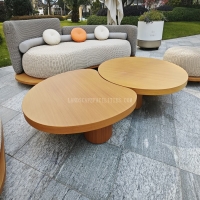Welcome to the website for landscape facilities products and knowledge.
What is the bin’s resistance to damage from exposure to refinery emissions?
Bins used in refinery environments face constant exposure to harsh emissions, including corrosive chemicals, high temperatures, and abrasive particulates. The resistance of these bins to damage depends on several factors, such as material composition, protective coatings, and structural design.
High-density polyethylene (HDPE) and stainless steel are common materials chosen for their durability and chemical resistance. HDPE bins resist acidic and alkaline substances, while stainless steel offers superior strength against physical impacts and oxidation. Additionally, bins may feature specialized coatings like epoxy or galvanization to enhance longevity.
Regular maintenance and proper placement also play crucial roles in minimizing damage. Bins positioned away from direct emission sources or equipped with ventilation systems tend to last longer. Understanding these factors ensures optimal bin performance in refinery settings, reducing replacement costs and downtime.
In summary, a bin’s resistance to refinery emissions hinges on material quality, protective measures, and environmental management—key considerations for industrial durability.
Related search:

Recommendation
Elliptical metal outdoor table with nested design, resembling wood grain, round table